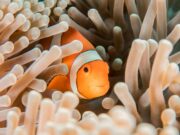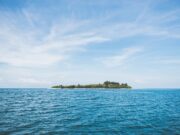SCUBA diving
Researchers find dolphins to be far more similar to humans than previously thought.
For those who have ever observed monkeys and apes – our closest evolutionary cousins – in the wild, in a zoo,...
Best of Show is a once-in-a-life-time moment where a curious octopus took a selfie of itself with the photographer's family.
Diving with Oceanic Whitetips
The glorious oceanic whitetip sharks spend a lot of time in shallow water, tend to swim slowly and are very curious. All of these mean that divers can get superb closeup view of them....
From now to 30 November 2020 you can submit your images to the prestigious Ocean Art competition. Prizes worth $40,000 are on offer to amateur and professional photographers.
In April the Underwater Photography Guide launched the Ocean Art Safe Under the Sea underwater photo competition to help raise money to fight coronavirus.
Yannick Bruynoghe"Welcome to Tubbataha"
Congratulations to all winners of the Ocean Art Underwater Photo Competition 2019 - stunning underwater photos from around the world. Over $85,000 in prizes have been awarded to 85 professional and amateur photographers in categories from Coldwater to Blackwater.
In the coral triangle, Sabah is home to some of the best diving in the world. The famous diving areas of Sipadan and Mabul islands are off the coast of eastern Sabah, with Layang Layang in the west. The MPAs will further increase the marine diversity in the area.
With 16 underwater photo categories for novices and professionals. Over $18,000 of prizes to be won.
The best way to protect corals threatened by climate change is to conserve a wide range of their habitats, according to a study in Nature Climate Change. The finding likely applies to conservation efforts for many other species in...
Even though European nudibranchs are some of the best studied in the world, scientists have now identified three new species. Divers searched around Europe for Trinchesia sea slugs – in the UK, Ireland, Norway, Sweden, Spain, Italy, France, Croatia and Russia.





























